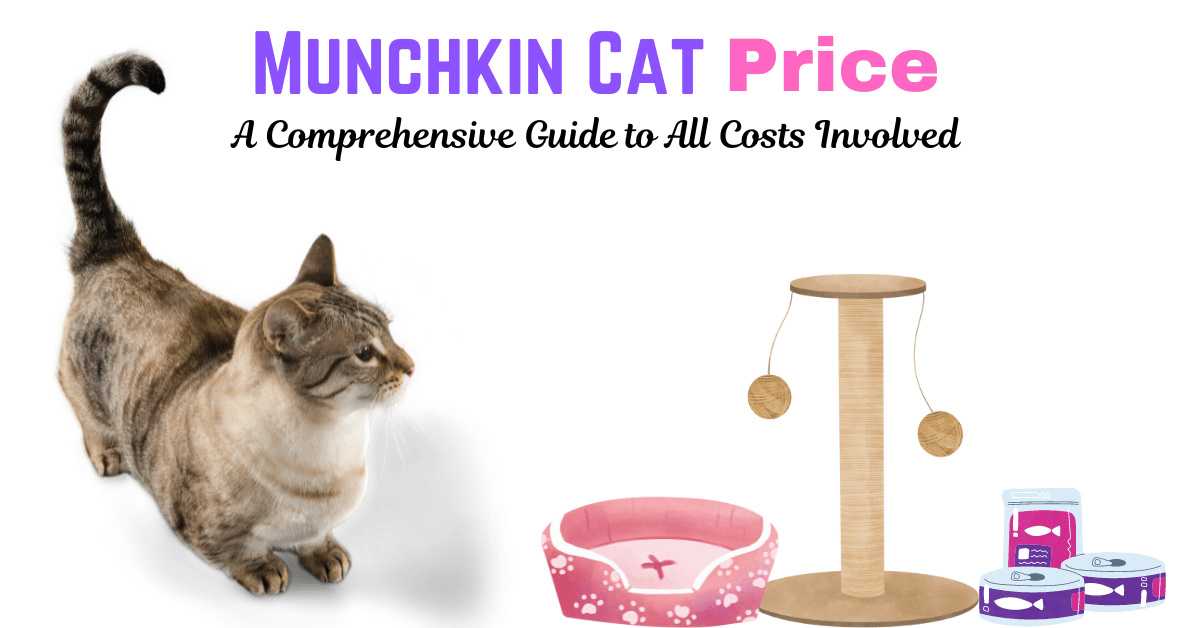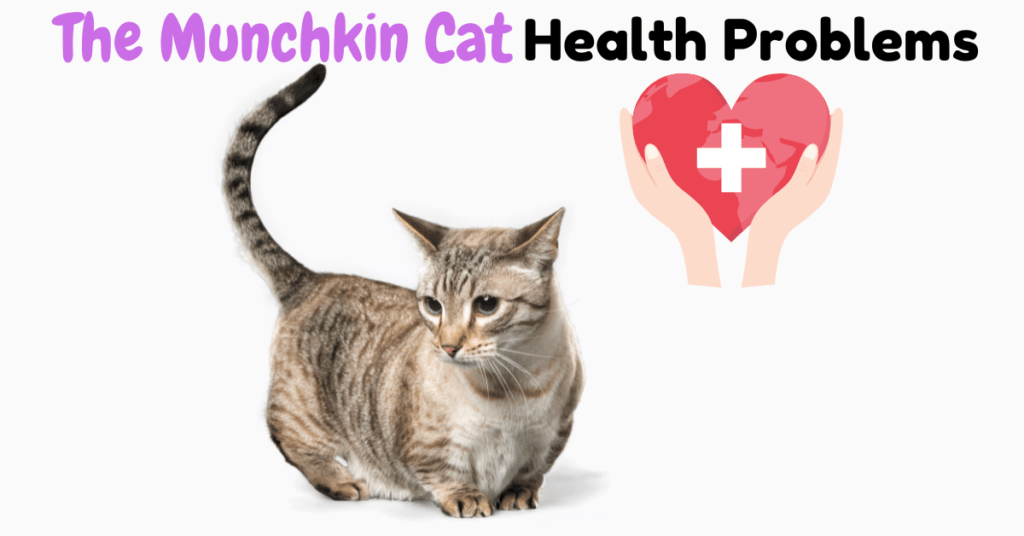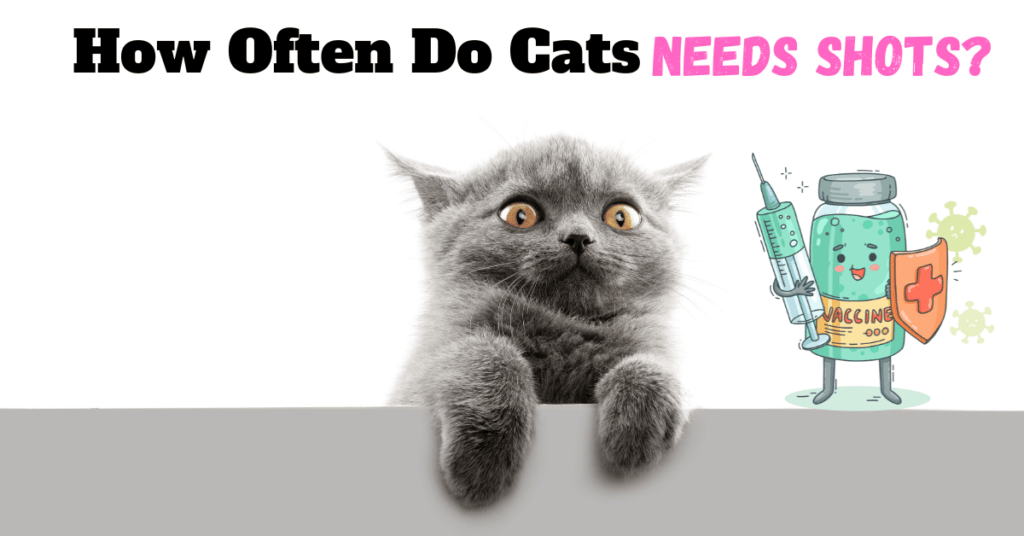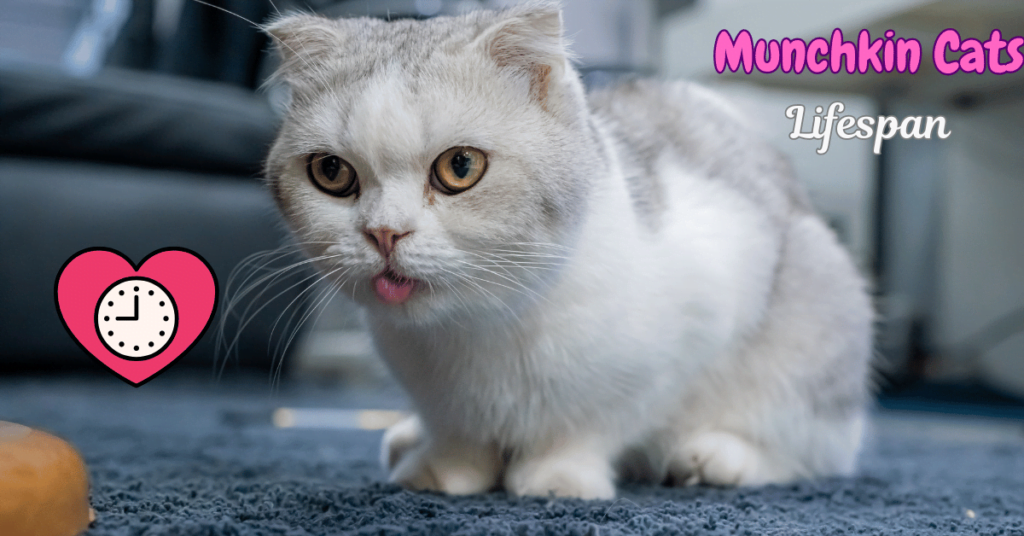This post contains affiliate links and I will be compensated if you make a purchase after clicking on my links.
Understanding Munchkin Cat Costs: Acquisition and Care Overview
Munchkin cats have gained massive popularity due to their unique, short legs and their loving, intelligent natures. Unsurprisingly, their distinctive appearance means that Munchkin cats can be quite expensive to purchase. These intelligent and incredibly affectionate cats are typically good with children and other pets, and are known for retaining a “kitten-like” demeanor well into adulthood.
If you’re thinking about adding one of these charismatic felines to your household, grasping the financial commitment is as essential as succumbing to their endearing quirks. While purchasing a Munchkin from a breeder might cost anywhere between $1,000 and $4,000, depending on various factors we’ll explore, it’s also possible to acquire one for free. However, free adoption doesn’t mean there are no further expenses.
In this post, we will delve into the myriad of costs associated with Munchkin cat ownership, ensuring you’re fully prepared for what lies ahead.
Exploring Munchkin Cat Acquisition Costs: Free, Shelter, or Breeder?
Owning a Munchkin cat involves various acquisition options, each with its own set of financial implications. Whether you find a Munchkin for free, adopt from a shelter, or purchase from a breeder, understanding these avenues will help you prepare for the associated costs. Let’s dive into the three primary ways to bring a Munchkin cat into your home.
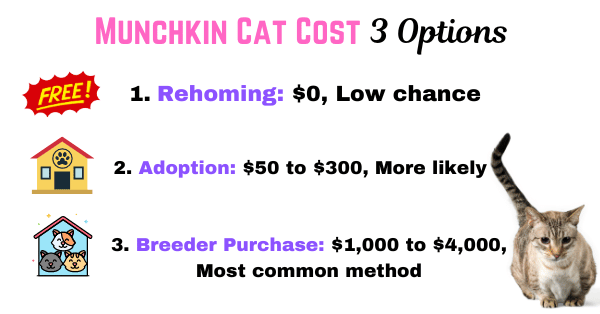
1. Free Rehoming: A Rare Opportunity
Occasionally, life circumstances change, leading Munchkin owners to seek a new home for their beloved pets. By engaging with social media groups and rehoming networks dedicated to cat adoption, you might stumble upon the rare chance to adopt a Munchkin for free.
These groups are typically filled with compassionate individuals who prioritize the welfare of the cat over a rehoming fee, ensuring the Munchkin finds a responsible and affectionate new owner. Although this option is the least expensive, it’s also the least common and can be quite unpredictable.
2. Adoption from Shelters: Economical and Ethical
Adopting a Munchkin from a rescue or shelter is a commendable and cost-effective option. Adoption fees generally range from as low as $50 to around $300, varying based on the cat’s age and health. These fees often cover essential initial veterinary care such as microchipping, vaccinations, and spaying or neutering.
Opting for adoption not only gives a cat a second chance at a loving home but also supports the shelter’s mission to assist other animals in need. While kittens may be more sought after and pricier, adult Munchkins often present a more affordable alternative, with the added benefit of giving an older cat a loving home.
3. Purchasing from Breeders: The Most Common Route
For potential owners seeking specific traits in their Munchkin, such as coat color or leg length, purchasing from a reputable breeder is usually the most straightforward approach.
While the prices for these cats typically range from $1,000 to $2,000, certain premium factors can drive the cost up to $4,000. It’s crucial to choose a breeder who adheres to ethical breeding practices, especially considering the breed’s unique physical characteristics, which can lead to health issues if not carefully managed. This method, though the most expensive, offers the most variety in terms of specific qualities and pedigree.
Factors Influencing the Price of a Munchkin Cat from Breeders
The cost of a Munchkin cat from a breeder can vary widely due to several factors, each adding a layer of complexity to the pricing:
- Length of Legs: The trademark short legs of Munchkin cats often dictate price; shorter legs typically command higher prices. However, extremely short legs can complicate the cat’s health, which is something ethical breeders are cautious about.
- Breeder’s Experience: Breeders with extensive experience and a good reputation often charge more for their kittens due to their proven track record of health and pedigree.
- Show Quality: Munchkins that are deemed show quality, especially those from champion lineage, can fetch a higher price. These cats meet specific breed standards and are suitable for cat shows.
- Age: Kittens are generally more expensive than adult cats due to their higher demand and the longer potential companionship duration they offer.
- Coat Color and Rarity: The rarer the coat color, the more expensive the cat. Unusual markings and colors that are in demand can significantly increase the cost.
Fact: Although these factors can increase the upfront cost of a Munchkin, it’s important to note that in comparison to other breeds with similar traits, the costs are relatively average.
Initial Costs and Supplies for Your Munchkin Cat
Bringing a Munchkin cat into your home involves more than just the purchase or adoption fee. There are initial veterinary costs and essential supplies that you’ll need to ensure your new companion is healthy and comfortable. The total initial cost can vary significantly based on how you acquire your Munchkin and what has already been provided.
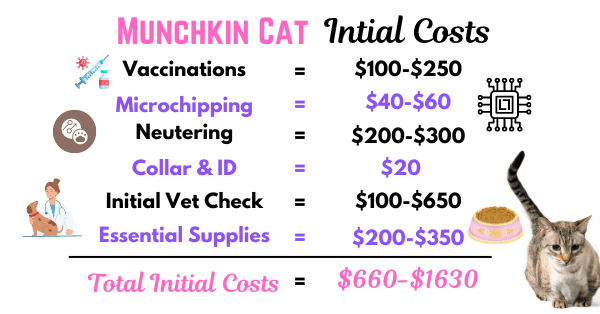
Veterinary Care and Procedures
- Vaccinations: Necessary to protect your cat from various diseases, these can cost between $100 to $250. If you acquire your Munchkin from a breeder or shelter, they may already be vaccinated, which can save you this initial expense.
- Microchipping: A microchip is a permanent method of electronic identification. The typical cost is between $40 and $60. Many shelters include microchipping in the adoption fee, so it may not be an additional cost if you adopt.
- Neutering/Spaying: This procedure can cost anywhere from $200 to $300. It’s essential for preventing unwanted litters and can help prevent certain health issues like breast tumors and testicular cancer. This cost might be included if your Munchkin comes from a breeder or a shelter.
- Collar and ID Tag: These are important for safety and identification and can cost about $20.
- Initial Vet Checks: Initial veterinary check-ups can cost between $100 and $650. These check-ups generally include a comprehensive physical examination, necessary vaccinations, and screenings for common parasites, along with potential blood tests, X-rays, or ultrasounds.
The cost of initial veterinary check-ups can reach up to $650, including specialized tests such as ultrasounds and X-rays, which cost up to $300 and between $75 to $250, respectively. However, in most cases, these specialized tests are not required.
Initial Essential Supplies for Munchkin Cats
In addition to medical procedures, there are several supplies you’ll need to purchase:
- Litter Box and Supplies: A high-quality litter box and litter can cost around $50. This is an essential purchase for any new cat owner.
- Grooming Tools: Items such as brushes, combs, nail clippers, and shampoo typically cost between $40 and $80. Grooming is crucial, especially if your Munchkin has longer fur.
- Bedding and Carrier: Comfortable sleeping arrangements are essential for your kitty. A good-quality bed can be purchased for up to $40. A carrier, while optional, is recommended if you plan on transporting your cat. Together, a bed and a carrier can cost around $100.
- Feeding Supplies: Food and water bowls are necessary from day one and usually cost around $20.
- Toys and Scratching Posts: To keep your Munchkin entertained and to prevent them from scratching furniture, expect to spend $50 to $100 on toys and scratching posts.
Total Initial Costs
Here’s a rough breakdown of the potential total initial costs you might expect:
- Basic Veterinary Procedures and Vaccinations: $460 to $1,280 (depending on whether some costs are covered by the breeder/shelter).
- Essential Supplies: Approximately $200 to $350.
You should be prepared to spend between $660 and $1,630 initial costs when you bring your Munchkin cat home. This range considers the possibility that some costs, like microchipping and vaccinations, may already be covered depending on how you acquire your cat.
Ongoing Expenses for Your Munchkin Cat
Caring for a Munchkin cat involves a variety of recurring expenses that are crucial for their health, comfort, and happiness. The cost of owning a Munchkin can vary significantly depending on factors such as the type of food you choose, routine treatments for flea, tick, and heartworm prevention, and whether you opt for professional grooming services.
Here’s a detailed overview of what you can expect to spend regularly to ensure your Munchkin cat remains healthy and joyful.
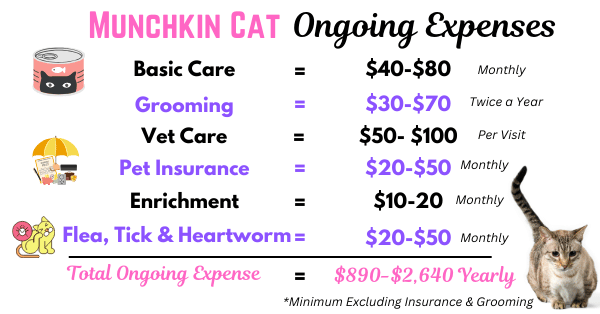
Routine Care Costs
- Food: A balanced diet is essential for Munchkins, with males typically needing more food than females due to their larger size. High-quality wet food, recommended for hydration, costs $15 to $25 for a 24-pack. Expect to spend $30 to $60 monthly on food and treats.
- Litter: Essential for cleanliness and hygiene, the cost for litter ranges from $10 to $20 per month. Clumping litter, preferred for its ease of use, might be at the higher end of this range.
- Grooming: For short-haired Munchkins, regular brushing and occasional baths are usually sufficient, which are cost-effective if you already have the supplies. However, long-haired varieties might require professional grooming every few months, with sessions ranging from $30 to $70 each.
Veterinary Care and Unexpected Health Expenses
- Emergency and Specialized Care: It’s wise to prepare for unforeseen health issues, such as hyperthyroidism or FLUTD, which can incur significant costs from hundreds to thousands of dollars depending on the treatment required.
- Pet Insurance: To offset some of the potential high costs of veterinary care, pet insurance is advisable. Monthly premiums can range from $20 to $50, varying with coverage options and factors such as age and health of the cat.
- Routine Vet Visits: Budget $50 to $100 per visit for regular health assessments, typically recommended at least once a year. This cost includes general wellness checks and may cover vaccinations. In some years, booster vaccines may be required, which could bring the cost closer to $100 per visit.
Monthly Entertainment and Enrichment
Keeping your Munchkin stimulated is vital for their well-being:
- Toys and Play: You can manage costs effectively by making DIY toys or purchasing in bulk, typically spending $10 to $20 per month. Simple toys often suffice to keep them entertained.
- Cat Furniture & Maintenance: Adding cat furniture such as shelves or trees not only helps address signs of boredom or behavioral changes. These items, along with their maintenance and occasional replacement, should be considered an annual expense. For a Munchkin, the yearly cost for such enhancements and upkeep should not exceed $200.
Additional Considerations
- Flea, Tick, and Heartworm Medications: Routine treatments for parasites are crucial and can vary in cost. Regular preventatives might range from $20 to $50 per month.
- Dental Care: Annual check-ups to prevent dental issues are important and can add to the cost, usually during the routine vet visits but can be more if dental work is needed.
Summary of Annual Costs
The monthly cost of maintaining a Munchkin cat can vary widely, typically ranging from $890 to $2,640. The minimum estimate covers all the basics, including food and litter, but excludes grooming and pet insurance. The maximum estimate includes these costs along with routine vet visits.
However, if your Munchkin faces health issues that require frequent treatment or emergency care, these costs can escalate significantly.
Cost-Saving Strategies for Munchkin Cat Owners
When managing expenses for your Munchkin cat, it’s crucial to avoid cutting costs on essential items like high-quality food and regular vet checkups, as these can lead to higher costs in the long run due to health issues.
Here’s how you can effectively stretch your dollar while ensuring your petite pal enjoys a royal quality of life.
DIY and Budget-Friendly Tips
Cats often find joy in the simplest of toys. A ball of paper, a string, or a homemade catnip toy can provide hours of entertainment. You can also craft a cozy cat bed from old sweaters or pillows instead of purchasing expensive pet furniture.
Bulk Buying
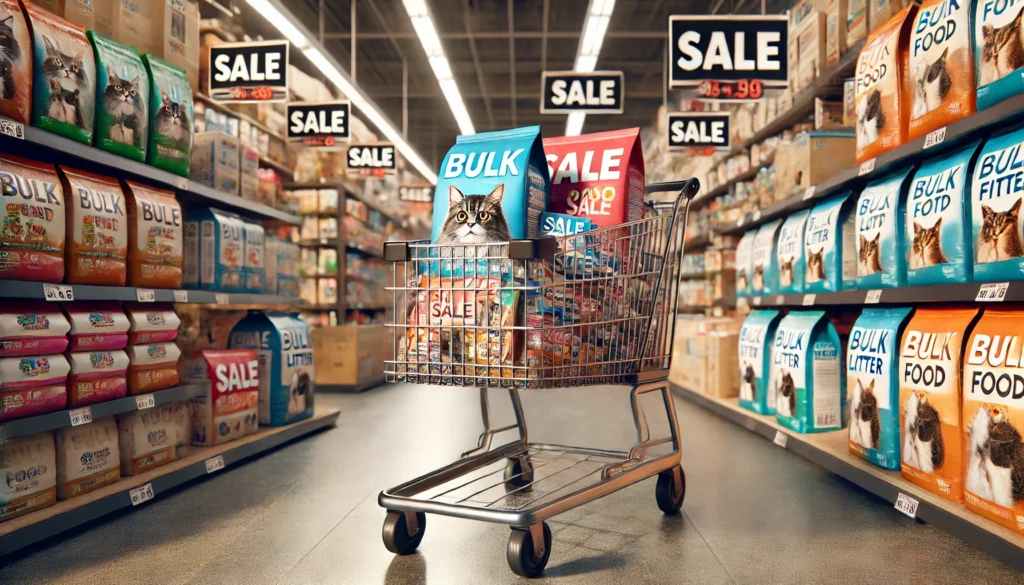
Purchasing food and litter in bulk can significantly reduce the monthly cost. Look for sales and discounts, and don’t hesitate to use coupons—they can make a big difference over time.
Grooming at Home
Learn the basics of cat grooming, including how to brush their fur, clip their nails, and clean their ears. This can save you a considerable amount over professional grooming services, especially if you have a long-haired Munchkin.
Preventive Care
Staying on top of your Munchkin’s health with regular check-ups can prevent diseases that are expensive to treat. Keep vaccinations up to date and maintain a routine that supports their overall well-being.
Pet Insurance
Choosing the right pet insurance can be a game-changer. Compare plans and choose one that best matches the needs of your Munchkin. Some plans offer comprehensive coverage that includes routine check-ups and preventive care, potentially saving you a lot in the long run.
Quality Diet
Investing in high-quality cat food can prevent a multitude of health issues down the line. A good diet reduces the likelihood of obesity, diabetes, and urinary tract problems, which can be costly to treat.
Keep Your Cat Indoors
Munchkins, with their unique physique, are generally safer indoors where they’re protected from traffic, predators, and diseases spread by other animals. This not only ensures their safety but also reduces potential vet bills from injuries or illnesses contracted outside.
Munchkin Cat Costs: Is It Worth the Investment?
If you’re looking for a cute and loving companion, a Munchkin cat can certainly be worth the investment. These charming little creatures bring immense joy and companionship to their owners. However, it’s important to be financially prepared for the initial and ongoing expenses associated with their care.
High-quality food, regular veterinary check-ups, and suitable enrichment are all crucial for their well-being and can add up financially. If you’re not yet ready to handle these financial responsibilities, it might be wise to postpone getting a Munchkin. Owning a cat is a serious commitment that involves not just love and attention but also significant financial planning to handle both expected and unexpected costs.
Meet Sean, a fintech whiz with a penchant for pet purrs and blockchain buzz. After a decade of fintech feats, Sean’s tech talents leaped from ledger lines to litter lines, driven by a passion for pets and a vision for a more connected pet care community. With three critter companions as co-pilots, Sean launched this blog to share a treasury of pet-friendly tech tips and tales.

